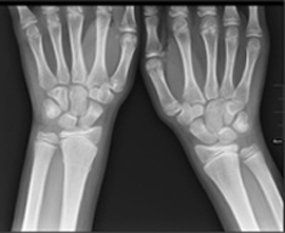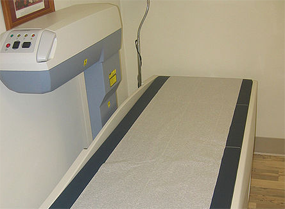Clinical Snapshots: Osteoporosis Guidelines: An Overview
Screening for osteoporosis should be conducted for all women 65 years and older and for younger women whose fracture risk is equal to or greater than that of a 65-year-old woman who has no additional risk factors, according to a US Preventive Services Task Force (USPSTF) recommendation statement draft. The proposed new USPSTF guideline would broaden the 2002 version, which recommended routine screening only for women 65 years and older and women aged 60 to 64 years who are at increased risk for osteoporosis fractures.

Women 65 years and older and younger women whose fracture risk is equal to or greater than that of a 65-year-old woman who have no additional risk factors should be screened for osteoporosis, according to a US Preventive Services Task Force (USPSTF) recommendation statement draft. The proposed guideline broadens the 2002 version, which recommended routine screening only for women 65 years and older and women aged 60 to 64 years who are at increased risk for osteoporosis fractures.
The next slides highlight the draft guidelines and include images and resources you can use to help diagnose and manage the condition in patients.

Treating Osteoporosis
Studies have shown that drug therapies reduce the risk of fractures in postmenopausal women who have had no previous osteoporotic fractures.
The choice of therapy to reduce fractures should be an individual one based on the patient's clinical situation and the trade-off between benefits and harms; clinicians should provide patient education on how to use drug therapies to minimize adverse effects.

Benefits of Screening for Osteoporosis
For women 65 years and older and for younger women whose fracture risk is equal to or greater than that of a 65-year-old woman who has no additional risk factors, there is moderate certainty that the net benefit of screening for osteoporosis using DXA is at least moderate.
Clinicians should take into account remaining life span when deciding whether to screen patients who have significant morbidity.
Impact of Rescreening Women for Osteoporosis
The potential value of rescreening women who were not found to have osteoporois with an initial screening test is improvement of fracture risk prediction.
Table. National Osteoporosis Foundation Treatment Guidelines for Postmenopausal Women and for Men 50 Years or Older
(From Identifying and Managing Osteoporosis: An Update, Journal of Musculoskeletal Medicine, 2010.)
- T-score of the femoral neck or spine -2.5 or lower
- Hip or vertebral fracture
- Postmenopausal women and men 50 years or older with a T-score between -1.0 and -2.5 at the femoral neck or spine
AND
10-year risk of fracture at the hip 3% or greater
OR
Major osteoporosis-related fracture 20% or greater based on the US-adapted WHO absolute fracture risk model

More Research Is Needed
The quantity and quality of data on osteoporotic fracture risk other than hip fracture are much lower for Asian, American Indian/Alaska Native, Hispanic, and African American women than for white women.
Further research that would provide information for clinical decisions about screening for osteoporosis include studies that establish parameters for treatment using quantitative ultrasonography as a primary screening test for osteoporosis, ascertain the true incidence of major osteoporotic fractures in nonwhite ethnic groups in the United States, clarify optimal screening intervals, and evaluate the impact of clinical and subclinical vertebral fractures on health-related quality of life.
